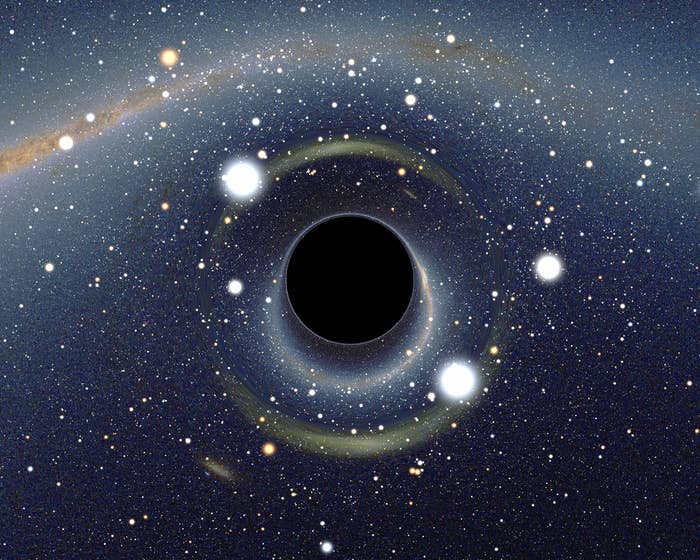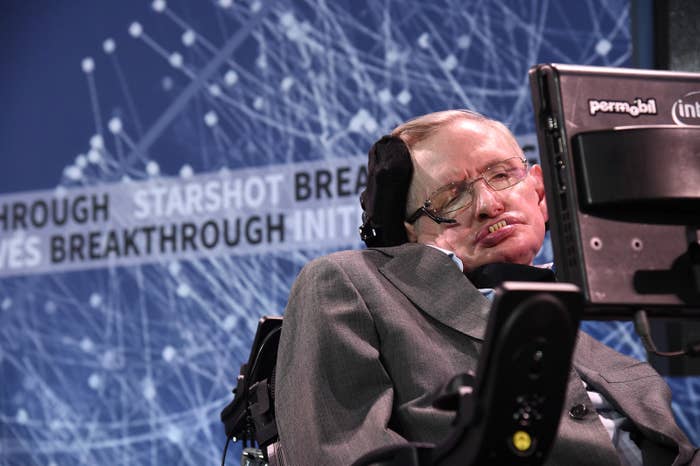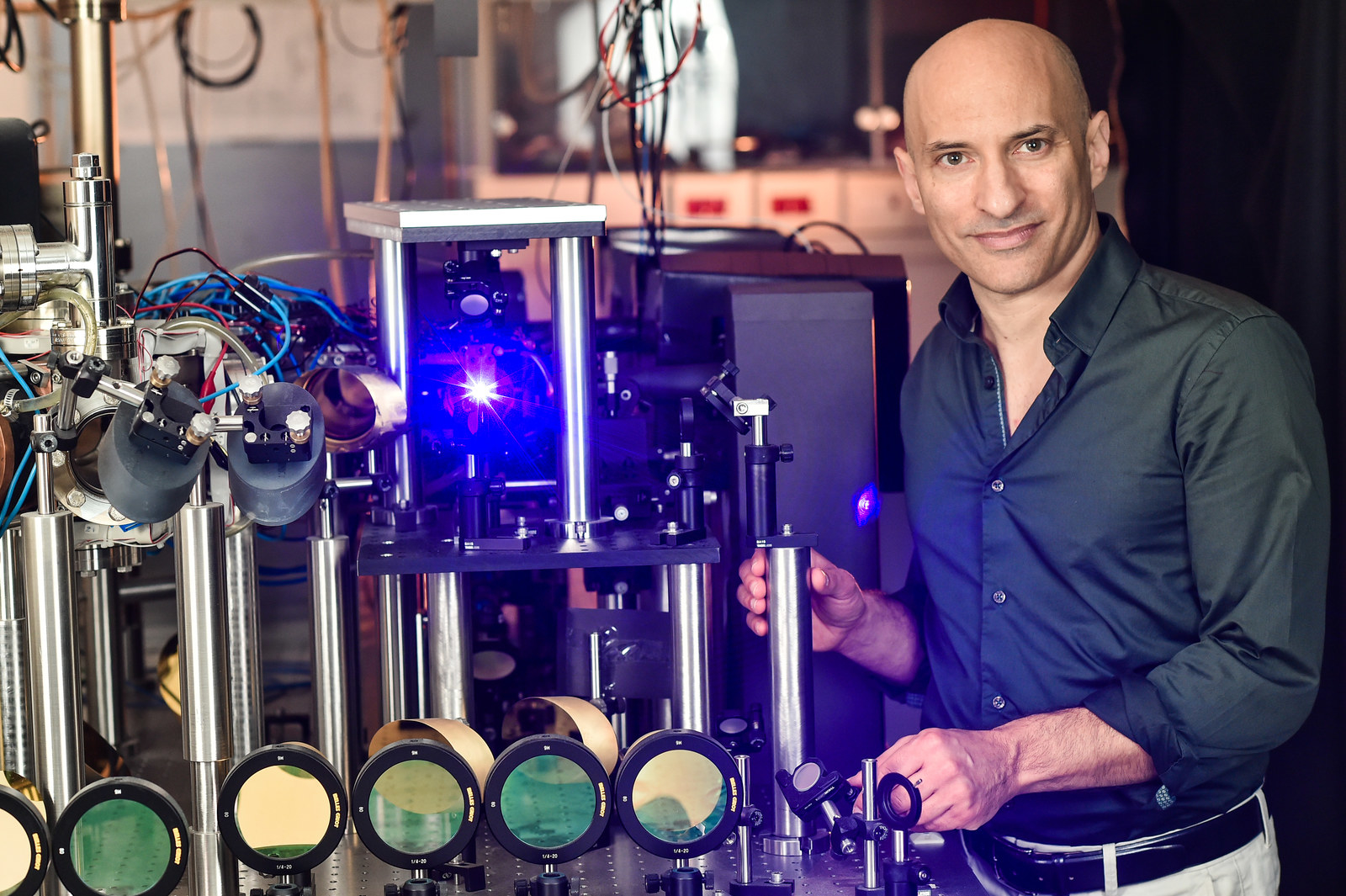
Scientists have seen “Hawking radiation” for the first time in a sort-of model black hole constructed in a laboratory.
It was Stephen Hawking who first proposed, in 1974, that small amounts of high-energy radiation could escape from black holes. Before that, scientists thought the gravitational pull of black holes was so strong that nothing could escape.
The research published today in the journal Nature Physics is by Jeff Steinhauer, a physics professor at the Israel Institute of Technology. His model uses sound instead of light to mimic the properties of black holes. These “acoustic black holes”, or “dumb holes”, were proposed in the '80s, but not built until 2009.
They are made by cooling atoms of the element rubidium to just above absolute zero, where they form an exotic, fluid form of matter. It's been shown that these acoustic black holes behave similarly to real black holes in important ways.
The idea is that, just as no light can escape once gravity reaches a certain strength, no vibrations can escape once a fluid is flowing faster than sound travels in that fluid. Instead of photons (light particles), acoustic black holes swallow the sonic equivalent – packets of energy known as "phonons".
Steinhauer told BuzzFeed News that his experiment had shown that pairs of phonons were created just outside the black hole, with one falling in and one escaping, just as Hawking predicted.

Black holes are the remnants of giant stars that die and collapse under their own gravity. As light passes near a black hole, it curves towards it, attracted by gravity. At a certain distance, depending on the mass of the black hole, the pull becomes so strong that nothing – not even light – can escape it. This distance is known as the "event horizon" of the black hole.
But Hawking showed that, right on the event horizon itself, pairs of particles are created out of nothing. One of each pair falls into the black hole, and one escapes into space. However, although it is predicted theoretically, Hawking radiation has never been detected in a real black hole.
Steinhauer said that his model can help explain another puzzling feature of black holes – the "information paradox". Physical theories say that all information about the stuff that falls into a black hole should be preserved. But Hawking radiation means that some black holes can evaporate, which suggests that this information can be lost.
But Steinhauer said his experiment showed that the particles escaping were "entangled" with the ones falling in. "The way we see the entanglement is if the waves outside the horizon correlate with the waves inside.
"If there's a wave outside the horizon, do I also see a wave the same distance inside? And you can see all of this, you can see a strong correlation."
According to Steinhauer, this entanglement shows that the information is not carried out of the black hole by the radiation, so Hawking was right – there is information loss. "My work helps to show that the entanglement actually occurs," he said. "It’s not just hypothetical."

Stephen Fairhurst, a professor at Cardiff University's school of physics and astronomy who was not involved in the study, was more cautious. He told BuzzFeed News that acoustic black holes are "interesting analogues, but they're never complete analogues", so it may not be that what applies in them applies in the real things. But, he said, it was an exciting way of studying black holes in the lab. "It's very cool that they can show correlations between the things that come out and the the things that fall in," he said. "We never could with a real black hole."
Both Steinhauer and Fairhurst say that this work could open up new avenues for research into one of the great mysteries of modern physics – how quantum mechanics can be reconciled with Einstein's theory of relativity, and particularly gravity.
"You’re probing this feature of gravity that is very hard to probe experimentally with real black holes," said Fairhurst. "Quite how these things can teach us about quantum gravity I’m not sure, but that’s surely the next goal – seeing how we can translate this into relativity."
